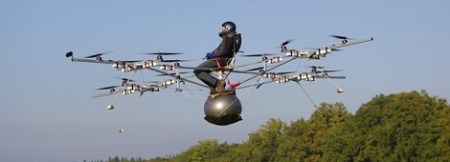Anyone who has ever been stuck in gridlock has probably daydreamed about pushing a button on the dashboard that turns their car into a plane. Imagine how much more relaxing a weekend getaway would be if you could take to the open sky instead hitting the congested highway. For as long as there have been aircraft and automobiles, man has tried to combine the two. The proper term for this marriage is ‘roadable aircraft’, and a successful one requires attention to the aerodynamics of flight as well as the rigors of motoring.
One promising attempt at a roadable aircraft came from Henry Smolinski, an aeronautical engineer in Van Nuys, California. He along with his friend Harold Blake started a company in 1971 called Advanced Vehicle Engineers (AVE) to produce the AVE Mizar. This flying car combined the lightweight Ford Pinto with the wings and partial fuselage of a Cessna Skymaster.













